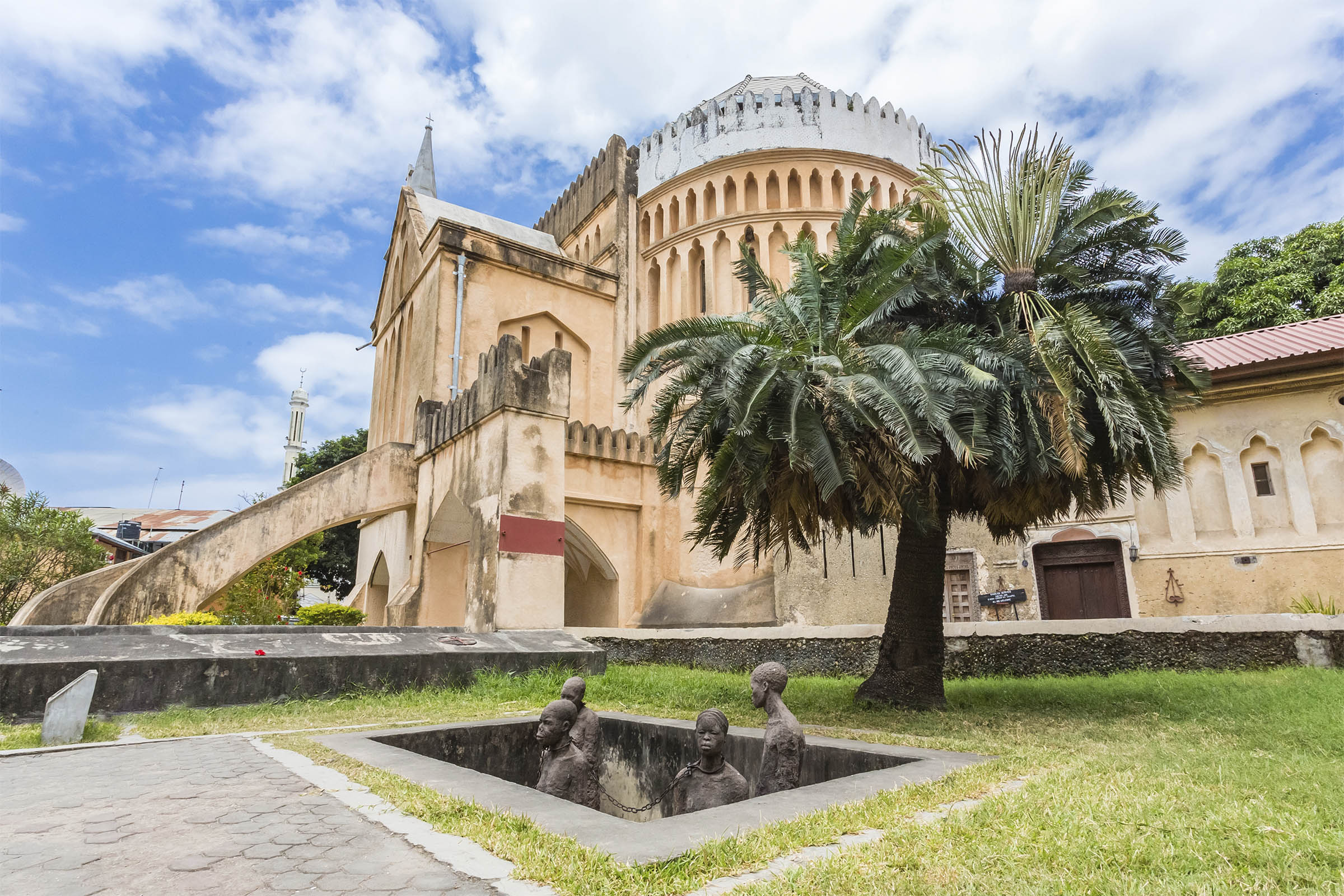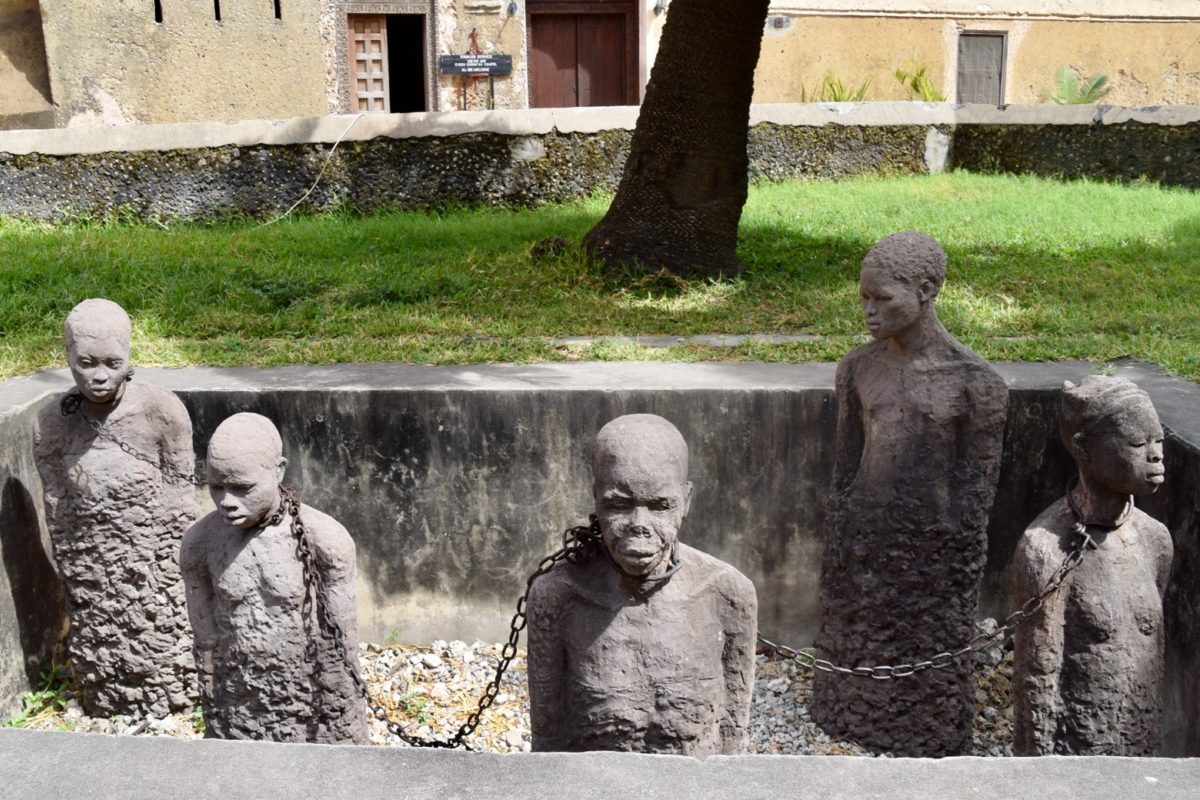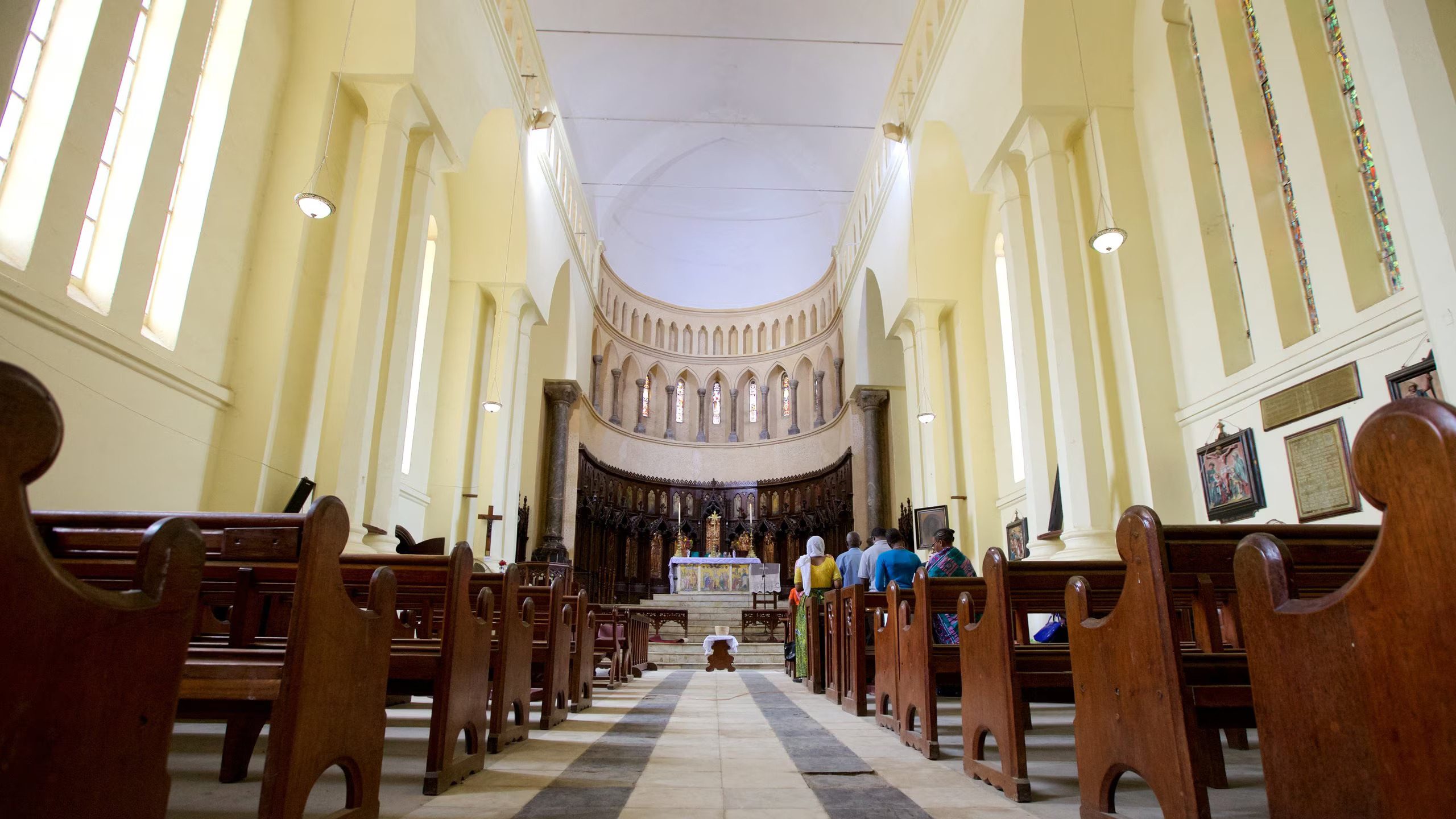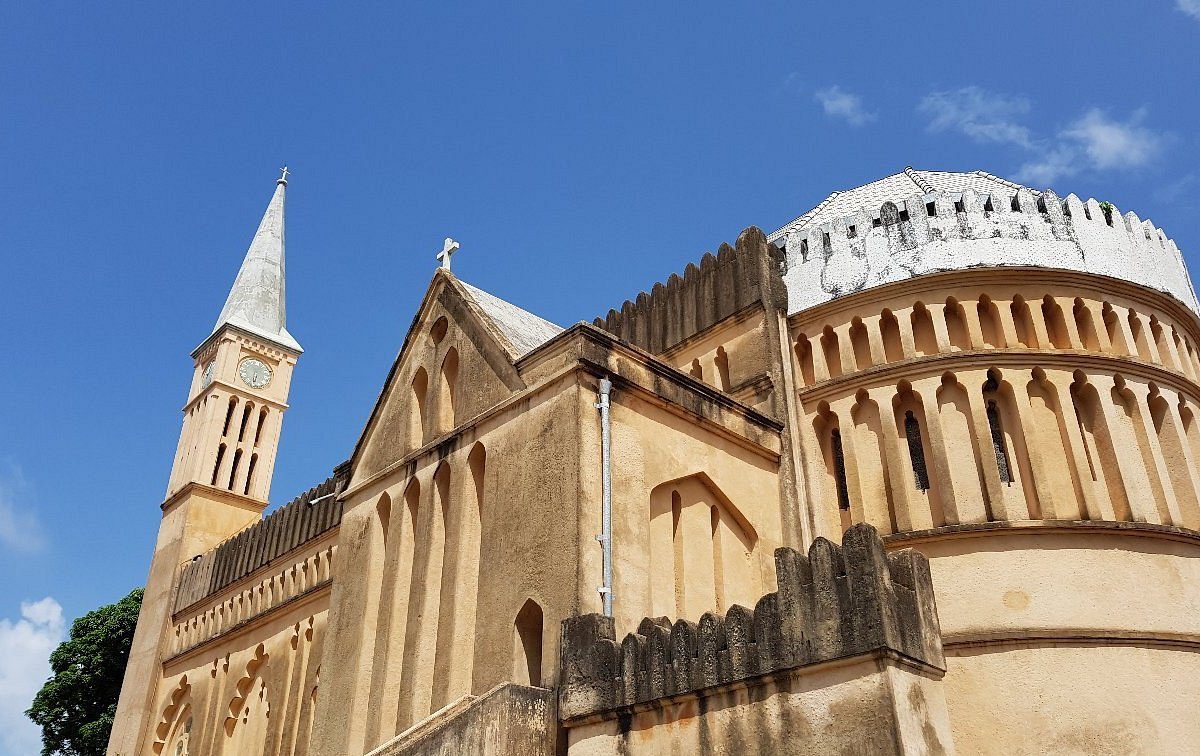The Old Slave Market and the Anglican Cathedral; located in Stone Town, Zanzibar, are historically significant sites that provide deep insights into Zanzibar’s past, particularly regarding the slave trade and colonial history. These landmarks are central to understanding the cultural and historical context of the island.

Old Slave Market
Historical Significance The Old Slave Market in Zanzibar, also known as the Zanzibar Slave Market, was one of the main slave trading centers in East Africa during the 19th century. Zanzibar was a significant hub in the trans-Saharan and Indian Ocean slave trades, and the market was a crucial point in the brutal trade of enslaved people.
Location and Architecture The Old Slave Market is situated in the heart of Stone Town. The market itself is a series of buildings and open spaces that were once used for the sale and exchange of enslaved individuals. Today, the site serves as a historical reminder of this dark chapter in Zanzibar’s history.
Memorial and Museum On the site of the old market, there is now a memorial and museum dedicated to the victims of the slave trade. The museum provides exhibits and information about the history of slavery in Zanzibar, including artifacts, documents, and narratives that detail the experiences of enslaved people. The memorial features a poignant sculpture depicting the suffering of enslaved individuals and serves as a place of reflection and education.

Anglican Cathedral
Historical Context The Anglican Cathedral of Christ Church, also known simply as the Anglican Cathedral, is located adjacent to the Old Slave Market. The cathedral was built in 1874 by the Church Missionary Society (CMS) on the site of the former slave market. Its construction was part of a broader movement by European missionaries to replace the slave trade with Christianity and provide a more humane focus for the island.

Architecture The Anglican Cathedral is an example of Gothic Revival architecture, which was popular among European missionaries and colonialists of the period. The cathedral features characteristic elements such as pointed arches, ribbed vaults, and large stained-glass windows. The design of the cathedral is both imposing and elegant, reflecting the influence of British colonial architecture.
Interior and Features Inside the cathedral, visitors can find intricate woodwork, historical artifacts, and beautiful stained glass windows. One notable feature is the memorial to David Livingstone, the famous explorer and missionary, who played a significant role in the anti-slavery movement. The cathedral also has a collection of old manuscripts and religious relics.
Current Use Today, the Anglican Cathedral serves as a place of worship and a tourist attraction. It is an important part of the historical and cultural heritage of Zanzibar and continues to attract visitors interested in the island’s colonial history and religious heritage.
Visitor Experience
Tours and Guided Visits Visitors to the Old Slave Market and Anglican Cathedral can often benefit from guided tours that provide detailed historical context and personal stories related to the slave trade and the development of the cathedral. These tours offer a deeper understanding of the significance of these sites and their impact on Zanzibar’s history.

Cultural Sensitivity When visiting these historical sites, it is important to approach them with respect and sensitivity, given their connection to the traumatic history of slavery. The memorials and museums are designed to educate and commemorate, and visitors should be mindful of the solemn nature of the history they represent.
Conclusion
The Old Slave Market and Anglican Cathedral in Stone Town, Zanzibar, offer a powerful glimpse into the island’s complex past. While the Old Slave Market serves as a somber reminder of the horrors of the slave trade, the Anglican Cathedral represents the significant historical shifts that followed, including the end of the slave trade and the spread of Christianity. Both sites are crucial for understanding Zanzibar’s historical and cultural evolution, making them important destinations for anyone interested in the rich and multifaceted history of the island.
